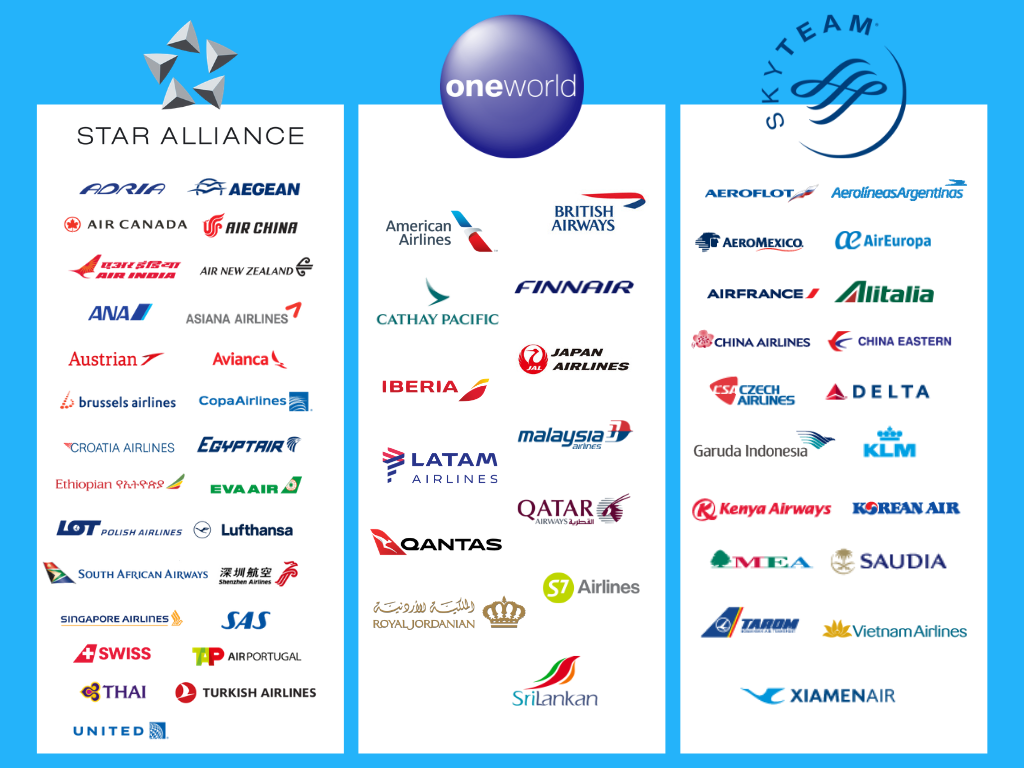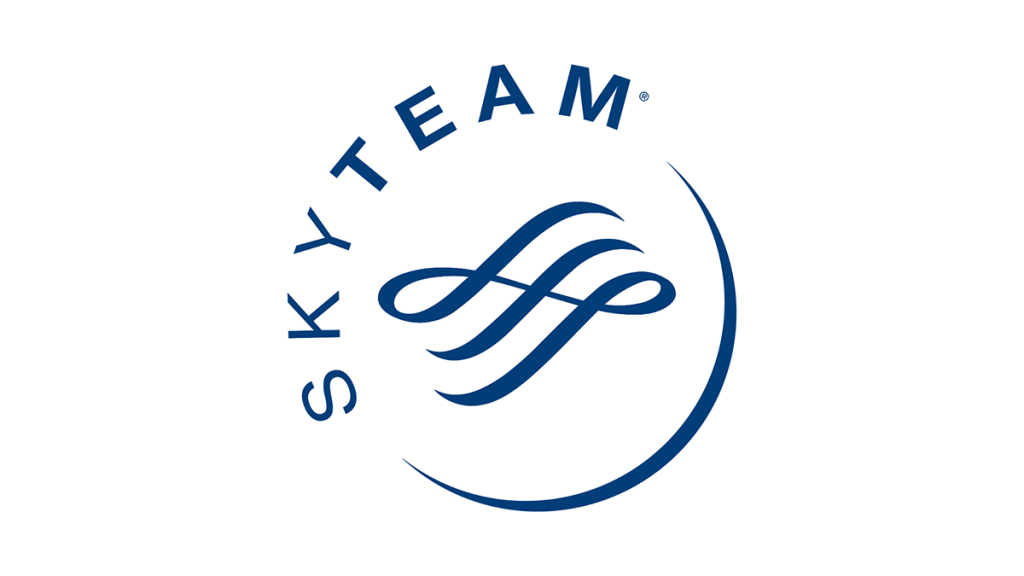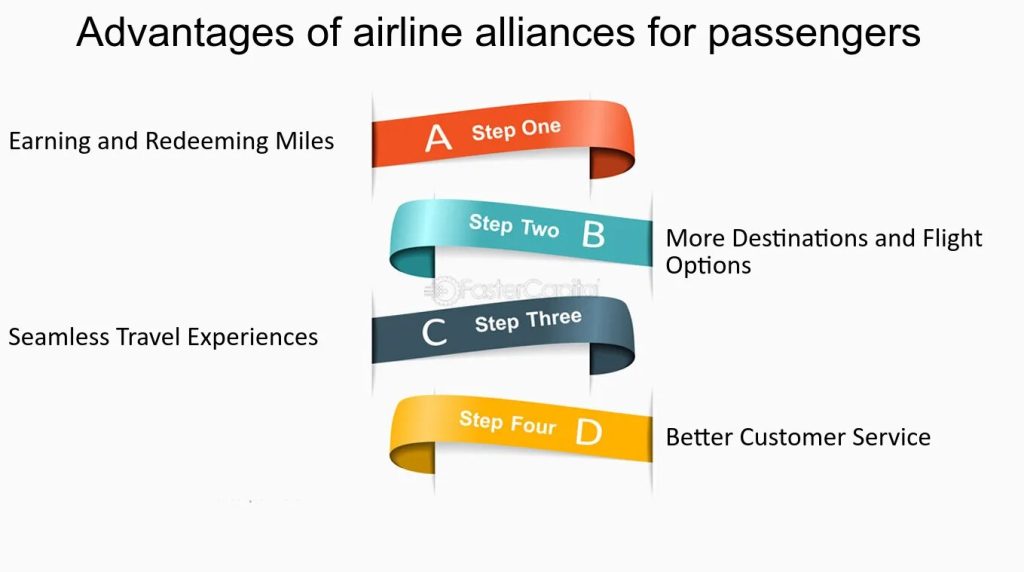Airline partnerships and alliances are vital in defining the contemporary travel experience, providing passengers with smooth connectivity, improved loyalty rewards, and greater flight flexibility. Whether you are a regular flyer aiming to maximise your benefits or an occasional traveler looking for better routes and savings, grasping the mechanics of these partnerships can enhance your flying experience.
In this article we will walk you through why airlines such as Alaska airlines, scandinavian airlines, and others choose to align themselves with companies such as oneword alliance for frequent flyer programs.
What Are Airline Partnerships and Alliances?
Airline partnerships represent strategic alliances between carriers that enable collaborative efforts across multiple operational facets, including code-sharing and joint frequent flyer programs. Such collaborations yield significant advantages for airlines, including cost reductions, enhanced efficiency, and an expanded global presence. You can often access them via premium credit cards. However, the most straightforward way to access them is through the airlines.

For travelers, these partnerships facilitate access to an extensive array of destinations, more streamlined booking processes, and additional benefits such as lounge access and priority boarding.
There are three primary categories of airline partnerships:
- Codeshare agreements – These allow airlines to sell seats on each other’s flights under their own flight numbers. For example, a British Airways passenger may book a flight to Tokyo under a BA flight number but actually fly with Japan Airlines.
- Interline agreements – These are looser arrangements where airlines agree to handle passengers on each other’s services, making it easier for travellers to book connecting flights with different carriers.
- Joint ventures and alliances – These involve deeper collaboration, where airlines share revenue and coordinate schedules to function almost like a single carrier on certain routes.
The greatest degree of collaboration is seen in global airline alliances, where various airlines unite under one organisation to provide a wide range of advantages to their travelers.
The Evolution of Airline Partnerships
Collaborations between airlines have been present in various forms for many years, but they have transformed considerably over time. In the initial stages of air travel, each airline functioned independently, developing its own network and facilities. However, as global travel increased in popularity, airlines started to create agreements to broaden their service areas without needing to manage every route on their own.
The first notable airline collaborations appeared in the 1980s, mainly through code-sharing agreements. These arrangements enabled airlines to display each other’s flights in their booking systems, enhancing convenience for travelers.
By the 1990s, the increasing desire for effortless worldwide travel prompted the establishment of extensive airline partnerships. The Star Alliance was the pioneer, launching in 1997 and uniting several international carriers within a single structure.
This was succeeded by Oneworld in 1999 and SkyTeam in 2000. These alliances harmonized benefits among member airlines, granting travelers access to a broader range of routes, shared airport lounges, and unified frequent flyer programs.
Currently, airline alliances continue to evolve, as advancements in technology improve the way airlines manage their schedules, loyalty programs, and customer service.
Major Global Airline Alliances
Star Alliance

Member Airlines
Star Alliance is the world’s largest and oldest airline alliance, consisting of over 25 member airlines spanning nearly every continent. Some of the key members include:
- Lufthansa (Germany)
- United Airlines (USA)
- Air Canada (Canada)
- Singapore Airlines (Singapore)
- ANA (Japan)
- Turkish Airlines (Turkey)
- Swiss International Air Lines (Switzerland)
These airlines collaborate to provide seamless connections for international travellers, ensuring consistent service quality and access to shared benefits.
Key Destinations and Coverage
Star Alliance offers an extensive global network, covering over 1,200 destinations in nearly 200 countries. Some of its most significant hubs include:
- Frankfurt (FRA) – Lufthansa’s primary hub, connecting Europe with North America, Asia, and Africa.
- Chicago O’Hare (ORD) – A key hub for United Airlines, facilitating transatlantic and domestic connections.
- Tokyo Narita (NRT) – ANA’s primary hub, linking Asia with the Americas and Europe.
- Singapore Changi (SIN) – A major transit hub for Southeast Asia, operated by Singapore Airlines.
Members of Star Alliance synchronise their timetables to minimize layover durations and provide travellers with a more seamless journey. Furthermore, their joint frequent flyer program enables customers to earn and redeem miles across all participating airlines, simplifying the process of accumulating rewards for upcoming trips.
SkyTeam

Member Airlines
SkyTeam is the second-largest airline alliance, formed in 2000, and consists of 19 member airlines covering a vast global network. Some of the key member airlines include:
- Air France (France)
- KLM Royal Dutch Airlines (Netherlands)
- Delta Air Lines (USA)
- Korean Air (South Korea)
- China Eastern Airlines (China)
- Aeroméxico (Mexico)
- Vietnam Airlines (Vietnam)
- Saudi Arabian Airlines (Saudi Arabia)
SkyTeam’s primary strength lies in its strong presence across Europe, North America, and Asia, particularly in transatlantic and transpacific travel corridors.
Key Destinations and Coverage
SkyTeam serves over 1,150 destinations in more than 175 countries, with major hubs in key global cities. Some of its most significant hubs include:
- Paris Charles de Gaulle (CDG) – A crucial European hub, operated by Air France.
- Amsterdam Schiphol (AMS) – KLM’s main hub, offering strong connectivity across Europe and beyond.
- Atlanta Hartsfield-Jackson (ATL) – Delta Air Lines’ largest hub, linking the USA with international destinations.
- Seoul Incheon (ICN) – Korean Air’s key hub, facilitating travel between Asia, North America, and Europe.
- Shanghai Pudong (PVG) – A major international gateway for China Eastern Airlines.
SkyTeam’s alliance benefits include coordinated schedules, shared airport lounges, and a unified loyalty programme where frequent flyers can earn and redeem miles across all member airlines.
Oneworld

Member Airlines
Oneworld, founded in 1999, is known for its strong presence in premium travel markets, with leading airlines from various regions. Some of its key members include:
- British Airways (UK)
- American Airlines (USA)
- Qatar Airways (Qatar)
- Japan Airlines (Japan)
- Cathay Pacific (Hong Kong)
- Finnair (Finland)
- Qantas (Australia)
- Iberia (Spain)
Oneworld’s network is particularly strong in long-haul and business travel, with several of its members ranking among the world’s best premium carriers.
Key Destinations and Coverage
Oneworld connects passengers to over 1,000 destinations in more than 170 countries, with key hubs across multiple continents. Some of the most important hubs include:
- London Heathrow (LHR) – British Airways’ primary hub, linking Europe with North America, Asia, and Australia.
- Doha Hamad International (DOH) – Qatar Airways’ central hub, providing extensive connectivity across Africa, Asia, and the Middle East.
- New York JFK (JFK) – A crucial transatlantic hub for American Airlines.
- Tokyo Haneda (HND) – A key Asian gateway, operated by Japan Airlines.
- Sydney Kingsford Smith (SYD) – Qantas’ primary hub for flights across the Asia-Pacific region.
Oneworld provides a range of prestigious elite status advantages, including access to first-class lounges, priority boarding, and smooth connections for premium travellers.
Every alliance presents unique benefits, and the optimal selection is influenced by a traveller’s preferred routes, frequent flyer status, and loyalty rewards.
Benefits of Airline Alliances
For Passengers
Airline alliances provide travelers with more than mere convenience; they elevate the overall travel experience. One of the primary benefits is the smooth connectivity they offer. Instead of having to book several individual flights with different carriers, passengers can travel on a single itinerary, facilitating easier transfers and minimizing the chances of lost luggage.

The integration of loyalty programs is another significant advantage. Frequent travelers accumulate miles across all participating airlines and enjoy elite perks such as priority check-in, increased baggage allowances, and access to airport lounges, no matter which airline they choose within the alliance.
For those who often fly internationally, alliances grant access to a broader network of routes. For example, a traveler departing from London to Sydney could begin their trip with British Airways and finish it with Qantas, all under the Oneworld alliance, and on a single ticket.
For Airlines
As travelers experience more seamless journeys, airlines gain from decreased expenses, broadened networks, and enhanced customer loyalty. Partnerships enable airlines to utilize shared resources, including airport amenities, check-in desks, and aircraft maintenance services, which greatly lowers operational costs.
Another significant benefit is the ability to extend their international presence without establishing new routes. For instance, a European airline can provide services to distant Asian locations by collaborating with a regional airline rather than committing to a completely new long-haul service.
Beyond Alliances: Other Types of Partnerships
While global alliances dominate the airline industry, airlines also engage in other strategic partnerships that offer similar benefits without full alliance membership.
Codeshare Agreements
A codeshare agreement is a collaborative arrangement between two or more airlines that allows them to offer seats on the same flight using their individual flight numbers. For instance, a flight run by Japan Airlines may also be available for booking under a British Airways flight number, providing travelers with greater flexibility in their reservations.
These partnerships enable access to a wider range of destinations, even if an airline does not operate its own planes on specific routes. They also streamline the process of making connections, allowing passengers to purchase itineraries involving multiple airlines on a single ticket, while ensuring that their luggage is checked all the way to their final destination.
Joint Ventures
Going a step further than codesharing, joint ventures entail a more extensive collaboration, where airlines synchronize their pricing, scheduling, and sometimes share revenues on particular routes. These collaborations resemble a small-scale alliance but are typically confined to specific markets.
A notable example is the transatlantic joint venture involving British Airways, American Airlines, and Iberia, enabling them to operate flights between Europe and North America as if they were a unified entity. Joint ventures are highly lucrative, providing airlines with enhanced control over competition and optimizing seat occupancy.
Unlike alliances, joint ventures do not necessitate that airlines belong to the same global network, which is why some airlines engage in multiple joint ventures that exist outside their alliances.
Interline Agreements
The most basic type of airline collaboration, interline agreements enable airlines to sell tickets for one another’s flights, simplifying the process for travelers booking multi-leg trips with various carriers. Although they do not provide the same degree of integration as codeshare agreements or joint ventures, they offer essential conveniences such as unified ticketing and baggage handling.
For instance, a traveler journeying from Manchester to a small regional airport in Asia might first take a long-haul flight with Qatar Airways before switching to a domestic airline. An interline agreement between these two carriers facilitates a smoother transition, even though they are not part of the same alliance.
These agreements are especially beneficial for smaller airlines looking to link their passengers to significant international routes without becoming part of an alliance.
Challenges and Criticisms
Although airline alliances and partnerships provide many benefits, they also come with certain disadvantages. Problems like diminished market competition and passenger uncertainty have sparked concerns among regulators and travelers alike.
Market Competition Concerns
One of the primary criticisms of airline alliances is their ability to restrict competition and increase fares. When major carriers collaborate, they effectively dominate a significant share of the global airline market, which diminishes the presence of independent competitors. This situation can result in elevated ticket prices on specific routes, particularly where alliance members have a stronghold.

Regulatory agencies, including the European Commission and the US Department of Transportation, closely oversee airline collaborations to prevent the formation of monopolies. In some instances, these authorities have implemented limitations on alliances, such as mandating that airlines relinquish airport slots to foster competition.
Passenger Confusion
Although alliances are designed to create seamless travel experiences, they can sometimes lead to confusion, particularly when it comes to frequent flyer benefits, ticketing, and customer service.
One common issue is loyalty programme inconsistencies. While alliances allow passengers to earn and redeem miles across multiple airlines, the rules regarding upgrades, mileage redemption, and elite status benefits can vary significantly between members. For instance, a British Airways Executive Club member may find that their Oneworld status doesn’t provide the same benefits when flying with Qatar Airways.
The Future of Airline Alliances
Emerging Trends
The airline industry is constantly evolving, and alliances are adapting to keep pace with technological advancements, changing passenger expectations, and global economic shifts. One of the most significant trends is the increasing digital integration between alliance members. Airlines are investing heavily in artificial intelligence and data sharing to provide a smoother, more personalised travel experience.
For instance, real-time data sharing across alliance members is helping to improve flight rebooking during delays, offering passengers automatic itinerary adjustments rather than requiring them to queue at service desks. Similarly, advancements in biometric identification are streamlining check-ins and security screenings, reducing friction for international travellers moving between alliance carriers.
Another trend shaping the future of airline alliances is the growth of airline joint ventures and individual partnerships outside of traditional alliances. Some airlines are opting for deep, strategic partnerships with specific carriers rather than fully committing to a global alliance. For example, Emirates and Qantas have a major joint venture that provides seamless travel across Australia and Europe, despite Emirates not being part of any alliance. This hybrid approach allows airlines to maintain flexibility while still enjoying the benefits of collaboration.
Potential Shifts in the Industry
The traditional model of airline alliances may change significantly in the coming years. One possible shift is the consolidation of alliances or the emergence of new global airline networks. As airline mergers continue—such as the recent rise of IAG (British Airways, Iberia, Aer Lingus, and Vueling)—the distinction between alliances and independent airline groups may blur. Some industry experts predict that airlines may eventually move away from broad alliances and instead form smaller, tighter partnerships focused on specific markets.
Conclusion
Airline alliances have transformed the way people travel, offering expanded global networks, enhanced loyalty benefits, and streamlined connections. From the early days of basic partnerships to today’s sophisticated alliances, these collaborations have helped airlines and passengers alike.
However, alliances are not without their challenges. Market competition concerns, frequent flyer complexities, and passenger confusion remain ongoing issues.
For travellers, understanding how airline alliances work—and how they may change in the future—can help them make the most of their journeys. Whether through loyalty perks, codeshare agreements, or independent airline partnerships, the landscape of air travel will continue to evolve, shaping the way people fly for years to come.

